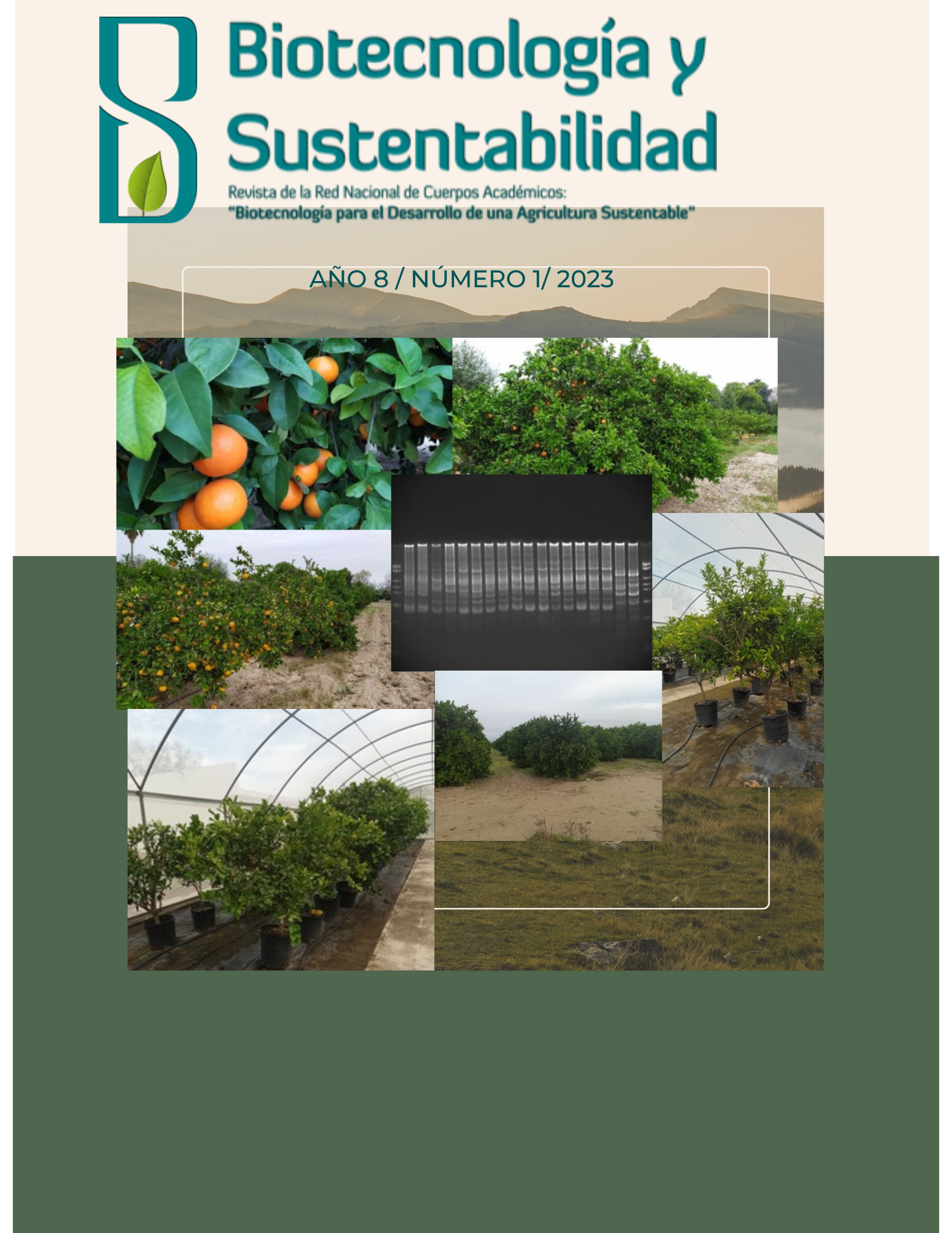Caracterización y diversidad genética de cítricos del banco de germoplasma del Campo Experimental General Terán: Caracterización genética de cítricos
Published 2023-12-19
Keywords
- Mandarins, grapefruits, lemons, markers, polymorphism, diversity.
How to Cite
Abstract
The citrus are one of the most widespread fruit crops worldwide and constitute a very complex group of genotypes with great phenotypic diversity. In Mexico, citrus farming represents a very important economic segment in agriculture, since it generates an economic benefit of more than 375 million dollars and in recent years, the area cultivated with citrus in the country has increased by 8%, registering 620,000 ha in 2021 compared to the 569,914 ha existing in 2010. However, like all crops, citrus is not exempt from various problems, where parasitological problems stand out, as well as a low supply of varieties to producers that allow them to be more competitive and give more sustainability to the citrus industry in the country. An alternative is the search or generation of new materials with characteristics of agronomic or industrial importance, for which the germplasm stored in germplasm banks, can be used. The objective of this study was to characterize and understand the genetic diversity that exists among the mandarin, grapefruit and lemon materials stored in the germplasm bank of the General Teran Experimental Field. In total, 35 citrus varieties were evaluated; 20 of mandarin, eight of grapefruit and seven of lemon. Genetic characterization was carried out using the Random Amplified Microsatellite (RAMs) technique and five markers were used. The level of polymorphism recorded was high and the genetic diversity detected allows us to infer the existence of a broad genetic base in the germplasm of mandarin, grapefruit and lemons included in the present study, which can be used in genetic improvement programs for the generation of new varieties with characteristics of phytosanitary, agronomic and/or agroindustrial interest.

